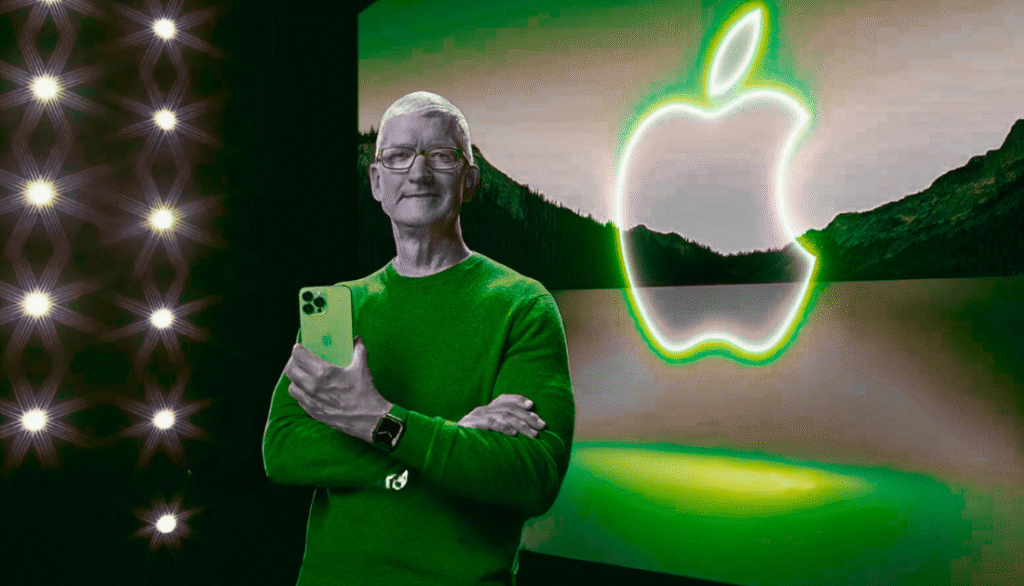Apple’s annual Worldwide Developers Conference (WWDC) begins Monday at 10 a.m. PT / 1 p.m. ET, with expectations running high for significant software announcements.
Highlights
- Major iOS Redesign: Apple is preparing its biggest UI update since iOS 7, with a visionOS-inspired look featuring translucent layers, floating panels, and circular app icons.
- Unified Visual Language: The redesign may extend across iPadOS, watchOS, tvOS, and CarPlay, supporting Apple’s goal of spatial computing and cross-device harmony.
- Year-Based OS Naming: Apple could shift to version names like “iOS 26” to align with macOS 26 and simplify updates across its ecosystem.
- Privacy-First AI Strategy: Under the “Apple Intelligence” banner, AI features will run on-device, including smarter Siri, better battery optimization, and AI-powered Messages and Mail tools.
- New AI SDK for Developers: Apple plans to release an AI SDK allowing third-party apps to use its private, on-device machine learning tools—boosting integration across the app ecosystem.
- AirPods Get Smarter: Expect new features like head gesture controls, tap-to-shoot for cameras, live translation, and possible sleep or studio mic modes.
- Gaming Hub Incoming: A new Game Center replacement could bring leaderboards, Arcade access, multiplayer chat, and personalized recommendations across iOS and macOS.
- Cross-Platform eSIM Transfer: Apple may allow users to shift eSIMs between iPhones and Androids—an unusual step toward more interoperability.
- Hardware Sneak Peeks: Minimal hardware is expected, though spatial controllers or a new home control tablet might be teased for future release cycles.
- Apple’s Software-First Reboot: With an emphasis on privacy, consistency, and dev-friendly tooling, WWDC 2025 sets the tone for a more connected and intelligent Apple ecosystem.
This year’s keynote may mark one of the most notable iOS design changes since iOS 7, as well as a more defined strategy around artificial intelligence and cross-platform integration.
VisionOS-Inspired Interface
Among the most anticipated announcements is a comprehensive redesign of iOS, expected to debut as iOS 26. Internally codenamed “Solarium,” this update introduces the most substantial visual changes in over a decade.
Drawing inspiration from visionOS—Apple’s operating system for the Vision Pro headset—the new interface may include translucent UI layers, floating panels, circular app icons, and softer textures.
If extended across platforms like iPadOS, watchOS, tvOS, and CarPlay, the redesign would mark a step toward a unified Apple aesthetic optimized for spatial computing and consistent user experience across devices.
Shift in OS Naming Strategy
Apple may also rebrand its operating systems with year-based naming, moving away from sequential numbers. For instance, instead of “iOS 19,” the next version could be labeled “iOS 26,” aligning with macOS 26, watchOS 26, and more.
This change could simplify version tracking in a multi-device ecosystem and help reinforce consistency across Apple platforms.
Focus on Privacy and Practicality
Apple is expected to take a more measured approach to generative AI compared to industry peers. Rather than cloud-based processing, Apple continues to prioritize on-device AI under its “Apple Intelligence” initiative—emphasizing privacy-first features and system-level integration.
Updates may include:
- A smarter Siri with improved contextual understanding (though still pending wide rollout)
- Enhanced battery optimization using AI models
- AI-powered suggestions in Messages and Mail
- Expanded use of Genmoji, Image Playground, and other creative tools
Apple may also introduce limited integration with third-party AI platforms such as ChatGPT, allowing users to opt into certain AI services.
New Developer Tools for AI Integration
To support its evolving AI ecosystem, Apple will reportedly launch a new SDK enabling developers to integrate Apple’s AI tools into third-party apps. This move aims to extend privacy-focused, on-device AI capabilities across the broader app ecosystem.
AirPods
Apple’s AirPods may receive notable upgrades tied to gesture recognition and device integration. Expected features include:
- Head gestures (nods or shakes) for accepting calls or controlling music
- Tap-to-control camera support for hands-free photography
- Live translation for real-time language interpretation
- Potential additions like sleep detection, camera shutter control, and studio-quality mic mode
Gaming Hub on the Horizon
Gaming may receive a renewed focus in Apple’s software suite. A new gaming hub app is reportedly in development to replace Game Center, consolidating features such as:
- Leaderboards
- Apple Arcade integration
- Social multiplayer features
- Personalized game recommendations
The app is expected to debut across iOS and macOS (with the latter potentially branded as “macOS Tahoe”), and may include tight integration with iMessage and FaceTime to enhance social gaming.
Cross-Platform eSIM Transfers
Apple may also introduce cross-platform eSIM support, allowing users to transfer eSIM profiles between iPhones and Android devices.
This feature simplifies switching between devices and reflects Apple’s gradual opening of interoperability in select areas.
Hardware Expectations: Minimal, But Not Absent
Although WWDC typically centers on software, minor hardware announcements could still emerge. Reports suggest Apple may:
- Preview spatial controllers to complement the Vision Pro headset
- Tease a new home control tablet, possibly delayed from early 2025
No major new device launches are expected, but Apple may plant seeds for future product categories.
A Software-Centric Recalibration
WWDC 2025 is shaping up to be a software-first showcase, with Apple focusing on:
- A bold iOS redesign
- Thoughtful AI integration
- Developer-friendly tools
- Subtle yet impactful upgrades across its ecosystem


